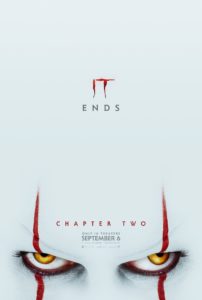 When I originally watched IT: Chapter One in theaters, I had some mixed reactions. Yet, in the intervening years, IT became something resembling a favorite. So I was a little wary when friends of mine saw IT: Chapter Two on opening weekend and gave it a shrug as a review, with the added explanation of, “It was long.” Given their ambivalence, I decided to hold off seeing IT: Chapter Two until it (pun intended) arrived on iTunes to rent.
When I originally watched IT: Chapter One in theaters, I had some mixed reactions. Yet, in the intervening years, IT became something resembling a favorite. So I was a little wary when friends of mine saw IT: Chapter Two on opening weekend and gave it a shrug as a review, with the added explanation of, “It was long.” Given their ambivalence, I decided to hold off seeing IT: Chapter Two until it (pun intended) arrived on iTunes to rent.
Needless to say, three months after its theatrical release, I finally watched IT: Chapter Two. Spoiler alert, my friends were right.
The Premise:
Twenty-seven years after their first encounter with the terrifying Pennywise, the Losers Club have grown up and moved away, until a devastating phone call brings them back.
And just in case you need the reminder, here’s a quick reminder of what IT: Chapter One was about:
In the summer of 1989, a group of bullied kids band together to destroy a shape-shifting monster, which disguises itself as a clown and preys on the children of Derry, their small Maine town.
Very minor spoilers.
Since watching IT: Chapter One in theaters, I’ve seen it a few more times. I even went back and watched the television adaptation starring Tim Curry. Weirdly, it was the television adaptation that really helped cement my love for Chapter One. The television adaptation (like the book, I assume) features the Loser’s Club as adults getting called back to Derry, with flashbacks of their shared childhoods where they were terrorized by Pennywise the Clown. I found the format interesting, but what really excited me was just how different the movies were. After all, Chapter One just focused on the Loser’s Club’s childhood: we never see their adult selves, which allows that first film to tell a complete story, while also allowing us to experience their horror first-hand instead of through flashback. So I was really, really excited to have Chapter Two bring us the Loser’s Club as adults. I assumed that because Chapter One focused on one half of the story, that Chapter Two would focus on the other half.
You know what they say about making assumptions.
One of my biggest complaints about Chapter Two is that it simply did not live up to those expectations. First of all, we get flashbacks, just like the television adaptation. I’m not talking brief glimpses of the kids together, but rather the brand new scenes of the kids being terrorized by Pennywise that we never saw in Chapter One. If those scenes were SO important to our characters as adults, why weren’t those scenes featured in the first movie? I mean, Richie never even had an encounter in the first movie before they went to the well-house, so seeing his own individual encounter was jarring. Necessary, sure, but jarring, because clearly it was important, but not important enough to show in the first film.
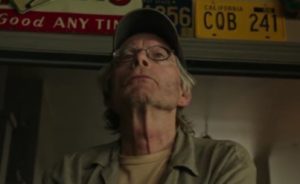
Then there’s Bill and his bike (loved the Stephen King cameo, by the way, and the digs at Bill regarding not being able to write an ending seemed like a subtle dig at the author as well). I know the bike is important in the television adaptation (and I’m assuming the book too), yet other than Bill riding his bike in Chapter One, it had no real importance. It was a bike. He used it to get from place to place. It’s not like there was ever a scene where it was a cherished item gifted to him by his dad.
Which leads me to my next complaint: in the source material, the childhood scenes take place in the fifties, with the adult scenes taking place in the eighties. Well, the film adaptation of Chapter One decided anything Stranger Things did, it could do better, and therefore set the Loser’s Club’s childhood in the eighties. And honestly? It worked. I think the target audience has more nostalgia for a period we lived through (the eighties) rather than one we didn’t (the fifties), so it helped draw us into the horror around us.
Because of this change, that meant the Loser’s Club as adults took place now. 2019 (or close enough), with all the cell phones and sports cars that comes with it. However, I couldn’t fight this niggling feeling that if you took out the cell phones and modern cars, I was still stuck in the eighties. Why?
Bill’s treasured bike? Not an eighties bike. It was very clearly a bike from the fifties. Then there’s the fact that Ben wears a denim shirt the whole time, and that very much screams eighties/nineties to me. When we visit the pharmacy, one of the women there still has the same make-up and hair as she did as a teenager.
I get it: some people just don’t grow out of their teen years. And even the small town of Derry feels stuck in time (yes, small towns have a way of doing this: I’d know, I live in one). One can argue that Derry is so stuck due to the evil force that’s haunting it, but all of these little things added up to create a cognitive dissonance while watching: I know that Chapter Two takes place in the here and now, but nothing has moved forward. The kids just grew up.
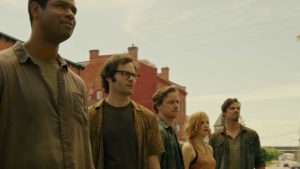
All of these things made the film feel longer than it should be. I kept asking myself why we even bothered with Chapter One if Chapter Two was essentially going to follow the same format as the television adaptation (and I’m assuming the same format of the book). Don’t get me wrong, I’m glad we have Chapter One, but Chapter Two weakened that first movie in my eyes: aside from the issues mentioned above, the scares weren’t frightening and some were downright cheesy (seriously, the special effects were pretty terrible when it came to some of those monsters), and the gay-bashing beatdown in the opening and Bev’s abuse at the hands of her husband never were resolved or even addressed in a meaningful way. So why were they there, other than to remain true to the source material?
To put it frankly, I was bored. I’d been so excited to see this movie, but ended up avoiding it in theaters because I heard it was three hours long and nowhere near the same caliber as the first. Watching it in the comfort of my own home allowed me to pause and complain. Even more damning, I paused the film halfway through to finish up the next day.
It’s not to say there weren’t some good things about the movie: the ending was good, better than the rest of the film deserved. And the casting was spot-on for the adult Losers (specifically Eddie and Richie; I wish they’d gotten Amy Adams for adult Beverly, but Jessica Chastain is a great second choice), and the acting was fantastic. But overall I felt the movie lacked a certain bit of heart, and ultimately I felt like I was watching the television adaptation all over again, which is a shame. I thought the decision to make the book into two movies was a bold one: that by splitting up the story and telling it chronologically, it could be told in a fresher way.
But no. What we got instead was a movie that could’ve stood on its own two feet without the first holding it up. Maybe some audience members, like myself, might’ve been a bit more confused without it, but I think the tension might’ve been sharper, because I wouldn’t have known what to expect from the story, from Pennywise, or from anything else.
So ultimately, IT: Chapter Two poses a great question: why did we even need IT: Chapter One? You tell me.

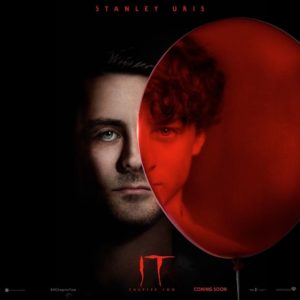
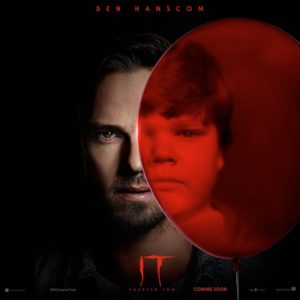
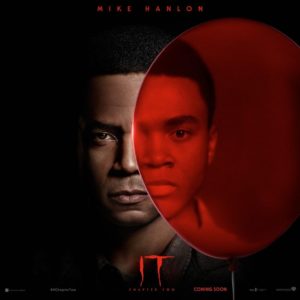

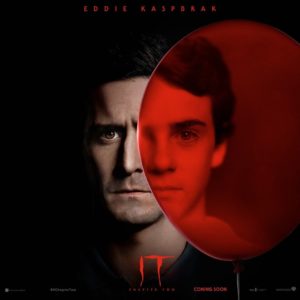
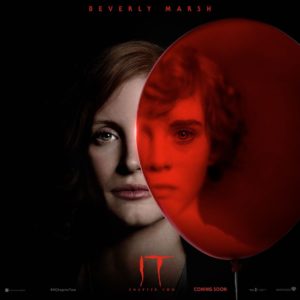
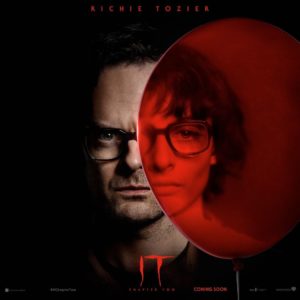
I still haven’t watched either movie because I tried reading It and just couldn’t get into the book. I think I read close to 300 pages before I gave up and took it back to the library. I’m almost always a book person, so I felt like this was a bad sign for the movie.
You know, it may be a format issue. If you get the chance, I’d encourage you to try the first movie (aka IT: CHAPTER ONE) and see how you like it. It’s contained to their childhood, and in and of itself, stands on its own.